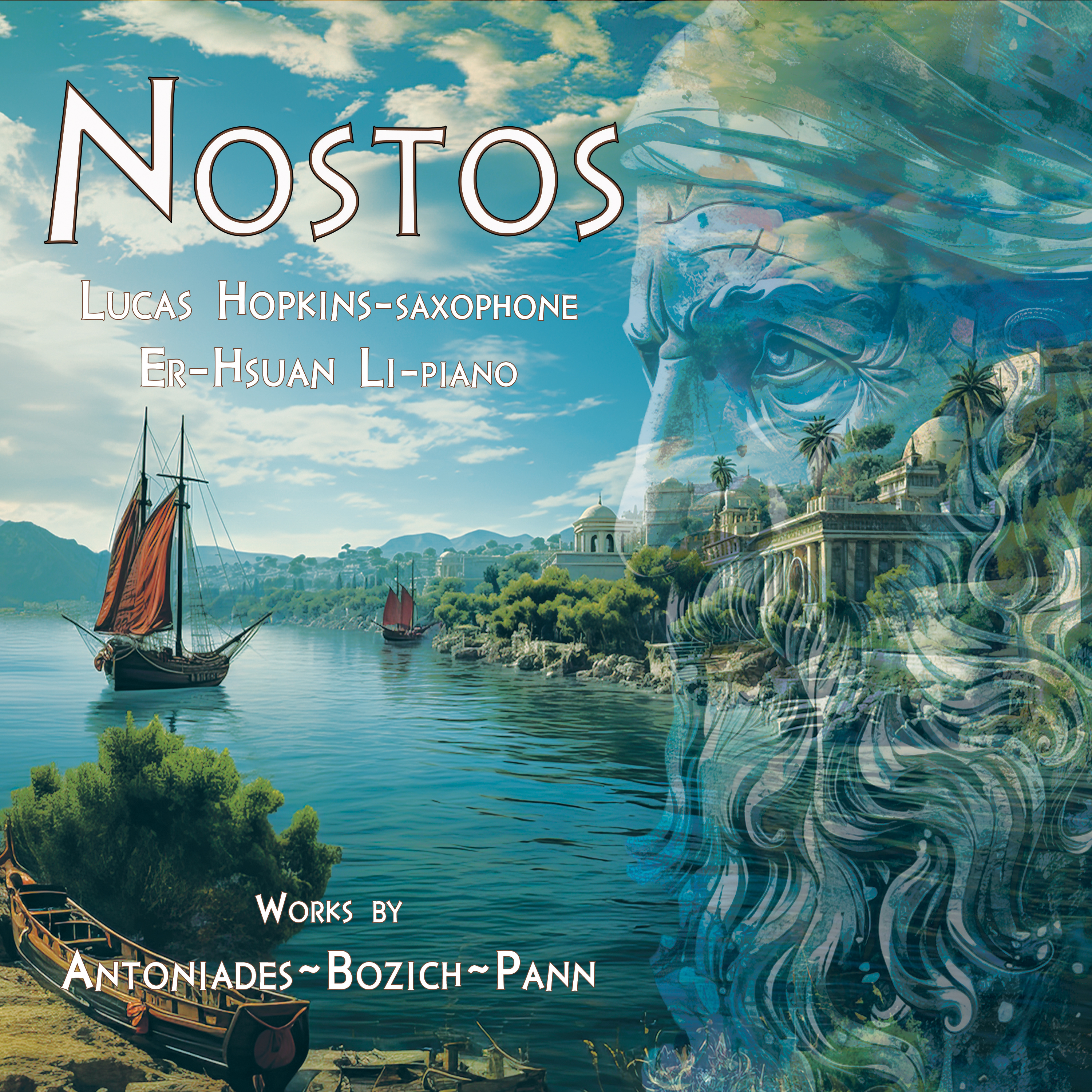Carter Pann: Sonata for Alto Saxophone and Piano
Composed in 2016 on commission from Joe Lulloff, Carter Pann’s Sonata for Alto Saxophone and Piano is a 25-minute monument in 4 movements. The work was inspired by both the saxophone music of late composer William Albright and Joe’s particular blend of finesse and brutality accompanied by an unparalleled command of the instrument. I. This Black Cat is a portrait of my very first feline friend in our household, but there’s a double meaning, as I may have been invoking some of the stylings of the great mid-century jazz cats like Coltrane, Parker, and Rollins. This first movement climaxes with huge “sax-waves” crashing over deep, horrific harmonic rocks in the piano. II. Songs Without Words is a set of drei lieder, each with its own title harkening back to the salons of the mid-19th century. The tone and tenor of this set is sullen, wistful, but at times exalting. This movement-set can be programmed on its own. III. Cuppa Joe is a sonic onslaught, a barrage of notes. Were this Sonata for a different musician I don’t think I would have had the stones to write something like this. IV. Epilogue: Lacrimosa in memory of Joel Hastings turns a sharp corner into the realm of abject sadness at the loss of a friend so dear as to be a brother. Joel and I collaborated on so many musical whims over the years until his untimely death in 2016 that we began to resemble a sort of rhyme scheme in lockstep… of one piece. [Carter Pann]
Aris Antoniades: Two Childhood Portraits
Two Childhood Portraits is a musical journey into the vivid memories of youth, captured through the evocative sounds of the soprano saxophone and piano. Comprising two distinct movements, this work delves into the innocence, joy, and nostalgia of childhood experiences.
The first movement, Hide and Seek, pays homage to the spirited games of concealment and discovery that enlivened youthful days. Echoes of laughter and the pitter-patter of feet resound as children dart amongst shadows and secret corners. The movement captures the essence of playful pursuit, with a fugue section reflecting the exuberant energy of children at play. Dedicated to the memory of Dr. Walter Hilse, my fugue professor during my conservatory years, this movement is a heartfelt tribute to the joyous spontaneity of childhood.
In contrast, the second movement, Sunset, transports listeners to the serene vistas of twilight. Inspired by the breathtaking spectacle of the sun descending into the vast expanse of the Mediterranean Sea from the heights of the Ancient Settlement of Curium in Cyprus, Sunset embodies the contemplative beauty and the poignant duality of dusk. Through tender melodies and harmonies that shimmer like sunlight on water, the music reflects upon the tranquil yet introspective moments of watching day give way to night. Symbolizing the interplay between beauty, security, and the uncertain horizon of the future, this movement invites listeners to reflect on the fleeting yet enduring impressions of childhood\'s twilight.”[Aris Antoniades]
Joseph Bozich: Sonata for Alto Saxophone and Piano
It’s a bit loaded to call any piece a Sonata in the 21st century. We live in an era of stories, images, and ideas; a composition that seeks to reference only itself can seem at best old-fashioned and at worst reactionary. And yet, part of the magic of music is to create effective drama, pathos, and “images” without concrete association, tones not representing ideas but the ideas themselves. It is in that sense that I wrote this Sonata; not even as a statement of concrete form, but as the representation of a substantial abstract work composed of integrally related movements for solo instrument and piano.
Sonata for Alto Saxophone and Piano is built as a continuously expanding cycle from the smallest scale to the largest, form created by motives recurring in the order they appeared, with even the first and last movements “rhyming” in their ending. The piece is in three connected movements. The first, Scherzo, is a restless, dancelike, agitato movement interlaced with lyric episodes of barely contained pressure. The second movement dissipates all energy and places the solo saxophone in a free cadenza, which after a brief introduction, explodes into a vicious and relentlessly rhythmic finale. Having demanded intense (and intensifying) technical and expressive virtuosity from both saxophonist and pianist throughout, the piece ends in victorious exhaustion. [Joseph Bozich]
Aris Antoniades: Nostos
Throughout the journey of composing this work, I sought to capture the essence of returning home, a concept deeply ingrained in the Greek word \"nostos.\" Rooted in my experiences growing up in Cyprus, this piece carries the weight of treasured memories from my homeland, reflecting the rich tapestry of Greek folk rhythms and traditions that have shaped my musical identity. Each movement within Nostos is a poignant reflection of specific memories tied to my roots:
The first movement channels the lively and competitive spirit of the traditional Cypriot dance form Zeimbekiko. It encapsulates the convivial nature of Cypriot culture, offering a glimpse into the spirited and celebratory essence of my heritage.
The second movement is an intimate homage to my beloved great-grandmother, Maroulla, who played a pivotal role in nurturing and shaping my early years. This lullaby of tender recollections serves as a testament to her unwavering kindness and the bittersweet journey of reminiscing about the past.
In the final movement, I attempt to recapture the exuberance of my childhood memories, centering on the infectious energy of Greek and Balkan folk dance rhythms. I used to be an avid folk dancer as a teenager, so this movement––based on the dance rhythm Leventikos––serves as a spirited celebration of the cultural traditions that have shaped my identity, reflecting my lively connection to my roots.


 Amazon
Amazon